January 2022 observations
We begin a series of articles dedicated to summarize the observations made in Irydeo-Z41, for those that require it, specific articles will be dedicated.
It is possible to follow each and every observation from the tracking page, updated daily.
As curiosities:
-
We have managed to capture the faintest object so far, using as instruments the Ritchey Chretien 30cm and the sCMOS QHY42Pro, with a magnitude of 21.7:
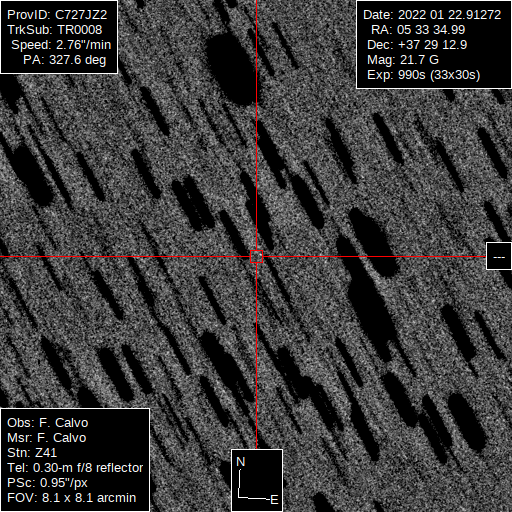
-
Using the Epsilon 160ED and the QHY268M camera we have captured the fastest asteroid I have ever managed to hunt, at no less than 780" per minute:
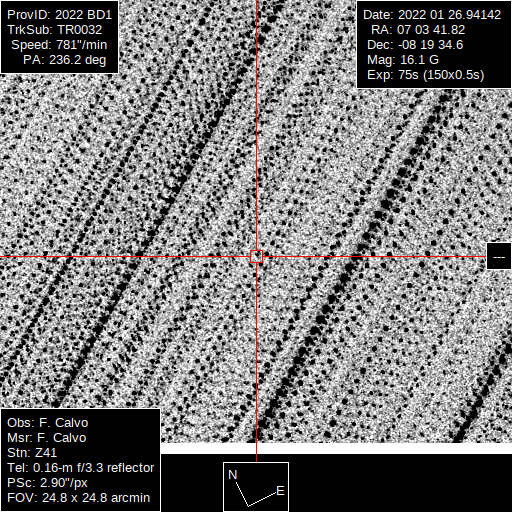
In total, a total of 23 observations have been made in 9 days, when the sky and weather conditions allowed it.
16 new candidate objects (NEOCP)
-
13 of them have been verified, 12 asteroids and 1 comet:
- 2022 BE6: Asteroid/NEO with a diameter of 13 metres, with Apollo orbit, very difficult to capture, due to its weakness and relative speed of 32"/minute.
- 2022 BV4: Asteroid/NEO with a diameter of 12 metres, with Apollo orbit.
- 2022 BU4: Asteroid/NEO with a diameter of 13 metres, orbiting Aten, passing at 78"/minute and captured with the Epsilon 160ED.
- 2022 BY1: Asteroid/NEO with a diameter of 10 metres, with Apollo orbit, crossing us at 148"/minute, forcing 0.4 second captures.
- 2022 BL2: Asteroid/NEO with a diameter of only 8 metres, with an Aten orbit.
- 2022 BD1: Asteroid/NEO with a diameter of only 5 metres, with Apollo orbit, crossing us devilishly at more than 780"/minute at 210.000km from our heads.
- 2022 BW1: Asteroid/NEO with a diameter of 29 metres and Apollo orbit.
- 2022 BU: Asteroid/NEO with a diameter of 13 metres, with Apollo orbit.
- 2022 BB1: Asteroid/NEO with a diameter of 30 metres, with Apollo orbit.
- 2022 BL: Asteroid/NEO with a diameter of 170 metres, with an Apollo orbit, very faint for its distance. It is, so far, as we said before, the faintest object I have captured.
- 2022 BF: Asteroid/NEO with a diameter of 13 metres, with an Apollo orbit.
- 2022 BB: Asteroid/NEO with a diameter of 13 metres, with Apollo orbit.
- P/2022 B1 (Wierzchos): Comet discovered by amateur amateur K. Wierzchos and confirmed as such in images reported by the G96 observatory on 25 January.
-
3 have not been detected: HAJ0001, C72PM42 and A10ESVu.
4 transients
-
3 could be verified and measured photometrically:
-
AT2022ayx: this is the quasar SDSS J114140.57+442052.1, with a magnitude of 18.3, a few tenths brighter than normal.
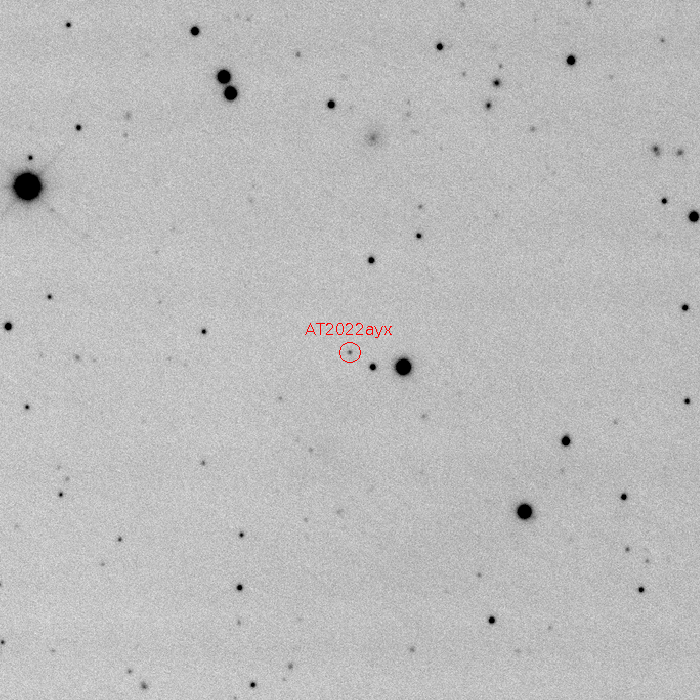
-
AT202222aud**: this is an active galaxy (AGN), now at magnitude 16.9, almost three magnitudes brighter than its usual brightness.
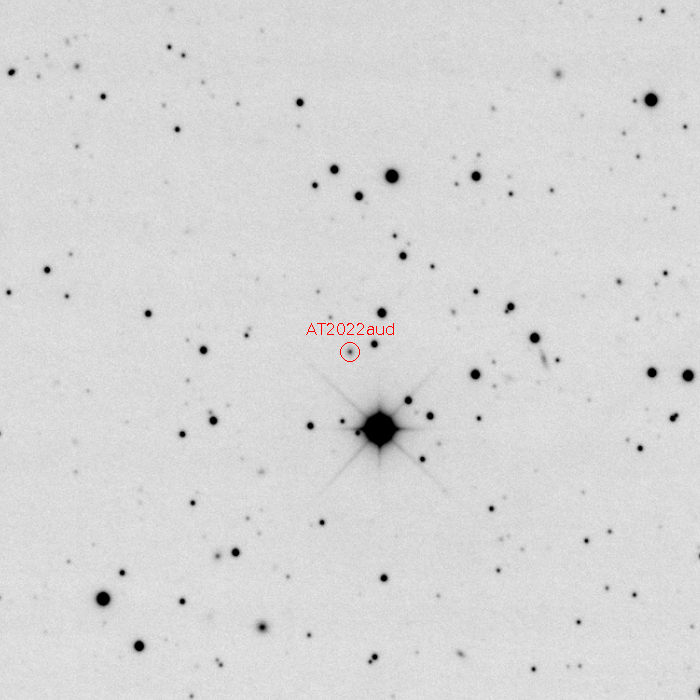
-
2022abq: Type II supernova.
-
-
However, one could not be confirmed:
-
AT202222bbz, as we can see, there is nothing at the specified position:
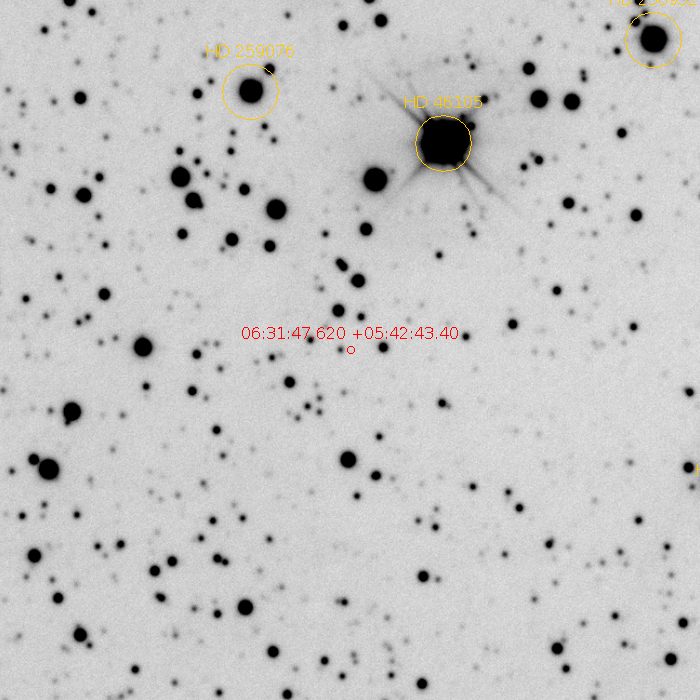
-
2 novas
-
We are performing photometric monitoring in the V-band (using a new generation Baader Bessel V filter) of two 2 dwarf novae (GPCom and V1239Her).
-
We can see below the first of them shining at magnitude 16.11V:
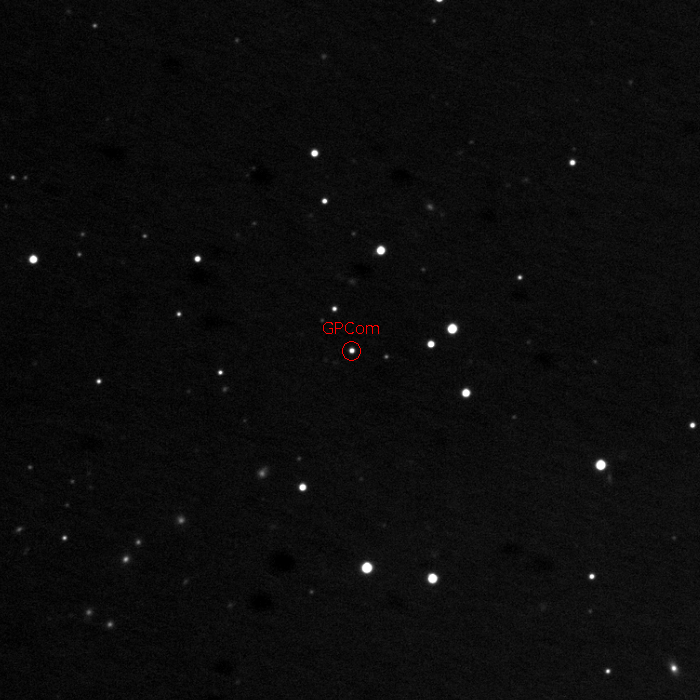
-

